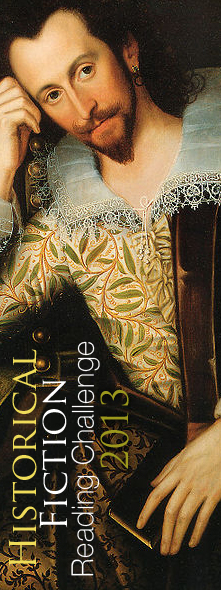One of my earliest attempts at costuming was a sacque-back gown, however – as is normal for one’s first attempts – not all aspects of the gown were historical. One of my first corrections of this was to make a set of 18th century stays that would more accurately shape the torso for the dress, but because the “stomacher” for this gown was embroidered onto the front of the previous stays that I used for this dress, it meant that the gown was left without one!

An embroidery pattern for a stomacher, by Margaretha Helm, ca. 1725.
I have made an embroidered stomacher before, to go with my caraco jacket, and I really enjoyed making it! It really stretched my embroidery skills, and ever since then I have wanted to make another to match my sacque-back gown.
Pattern
In my search for ideas for a pattern, I happened across several drawings from a pattern book by Margaretha Helm, on the Victoria and Albert Museum website. Here is what is written about the particular one I chose (pictured above):
This is a printed design for embroidery, with some drawn-thread work, for a stomacher featuring a floral pattern. Drawn-thread work is a form of counted-thread work in which the embroidery threads are used to pull the fabric threads apart. This creates an openwork pattern of holes and stitching. A stomacher is a stiff panel, usually triangular in shape and often heavily decorated, inserted in an open bodice to cover the corset in eighteenth-century dress. It is from a pattern book for embroidery (about 1725) by Margaretha Helm (neé Mainberger) (born in 1659 in Deiningen, died in 1742 in Nuremberg, Germany). Helm worked in Nuremberg as an embroiderer, a teacher of embroidery and a copperplate engraver who had her designs published by Johann Christoph Weigel. The V&A has a series of pattern books for embroidery in three parts by Margaretha Helm of which this volume is Part I. It is entitled Kunst-und Fleiss-übende Nadel-Ergötzungen oder neu-erfundenes Neh-und Stick-Buch or
The Delights of the Art and Industry of the practising Needle or the newly invented Sewing and Embroidery Book.
from Victoria and Albert Museum website
The design is symmetrical but not perfectly identical on both sides. I printed off the pattern and enlarged it to the size I needed to fit the front of my gown. I traced the full-sized pattern onto a large sheet of paper (as enlarging the pattern with the photocopier reduced its clarity), and then I traced it onto my fabric and began stitching!
Construction
The stitches I used are all ones that I have found before on extant embroidery pieces. Despite the V&A description stating that the pattern included “drawn” (or maybe more accurately, “pulled”) work, I did not do any of this on my stomacher. Instead I used laid work or various types of filling stitches that provided a patterned look to the finish.
The stitches I used were chain stitch, satin stitch, backstitch, seed stitch, long-and-short stitch, colonial knots, buttonhole wheel, laid work (called lattice work in this video), feather stitch, and stem stitch.

The beginnings!
I used a blue, water-erasable, pen to draw the design. This works well for me, although the colour does have a tendency to reappear after a while.

A flower, showing detail of the laid work, chain stitch and stem stitch.

A flower, showing detail of satin stitch, seed stitch and chain stitch.

More flowers, showing the detail of satin stitch, laid work, french knots, and chain stitch.

Flowers with satin stitch, laid work, and eyelet stitch (or buttonhole wheel), plus the chain stitch stems.
Once the embroidery was finished, it was mounted on to a boned base made from cotton broadcloth and synthetic whalebone.

The back of the stomacher, showing the boning channels.
The edges were bound with a bias-binding strip and tabs were handsewn on.

All finished, with a boned base and tabs handsewn on.
And some photos of it being worn!

I wore my stomacher for the first time to a Georgian High Tea!
I have a new embroidery project on the go now, so keep an eye out for posts about it later in the year!
Relevant Posts
A Sacque-back gown (one of my earliest costumes)
Sources and Relevant Links
Image and Quote Source: Embroidery design for stomacher, ca. 1725, from Victoria and Albert Museum
18th Century Embroidery Techniques, by Gail Marsh – buy on Amazon







Fabulous, as always!
Thank you!
Exquisite work! I have never persevered enough with hand embroidery to get much beyond childish chain stitch and ‘lazy daisy’. This is really gorgeous.
I started with simple backstitch to create historical “lines” on clothing, then I gradually got better and better. Thank you!
It’s so pretty! Nicely done.
Thank you! I am feeling very proud of it!
Just fantastic! Wonderful work! I’ve enjoyed many of your blog posts as I’m just starting out in the world of historical costuming. Thank you for all you do!
I hope you enjoy your own costuming journey! I find it very satisfying and interesting.
It’s just beautiful and the dress – wow! I love to do hand embroidery too.
Thank you! It is very enjoyable to create something embroidered that I can wear, instead of hang on a wall!
That is an impressive amount of very fine work! Well done! 🙂
Thank you!
[…] Making an Embroidered Stomacher, from 1725 […]
This is so pretty!!!
Thanks so much!
[…] Making an Embroidered Stomacher, from 1725 […]